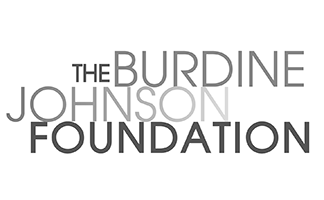Joan Crawford: Forsaking All Others

The AFS Essential Cinema Series Bette & Joan, spotlighting two of the greatest film actresses of Hollywood’s Golden Age Bette Davis and Joan Crawford, is currently underway at the AFS Cinema. The series culminates in a Movie Madness party and screening of WHAT EVER HAPPENED TO BABY JANE? on August 25.
Though they shared a profession and were contemporaries, Bette Davis and Joan Crawford were notorious enemies. Both were fine actresses, and both had long careers that went through many seasons, from their years of radiant youth, through to their critically acclaimed peak years, and, much later, as stars of horror and thriller films in the PSYCHO mold. For this Essential Cinema series we lightly scratch the surface of these remarkable careers. Naturally we conclude it with the film that brought their rivalry to a screaming climax, WHAT EVER HAPPENED TO BABY JANE?
Born Lucille LeSueur in San Antonio sometime between 1904 and 1906, the young woman who was to later be known as Joan Crawford developed an affection for the stage at an early age. Her stepfather ran the Opera House in the family’s adopted hometown of Lawton, Oklahoma and the young Lucille was exposed to a wide variety of touring performers. Her home life, however was unhappy. The stepfather was a lech at home and an embezzler at work.
The family relocated to Kansas City, where the mother and stepfather soon split up and pre-teen Joan was compelled to work her way through Catholic school, scrubbing toilets. All this time, Crawford harbored a love of show business and as she grew up she became an uncommonly beautiful young woman with enormous eyes and radiant good health. Soon, show business began to meet her halfway.
She became a chorus girl in a number of traveling revues and, while in New York, she caught the eye of a talent scout who took a screen test of the gorgeous young woman and sent it to Hollywood. MGM, then the most prestigious studio in the movie capital, signed her to a modest contract in 1924. She was to remain with MGM for nearly nineteen years, becoming in the process one of the biggest stars in Hollywood and suffering a downfall in popularity – largely caused by a decline in script quality – that mirrored the arc of her contemporary and rival Bette Davis.
During the course of her stardom she largely created the template for what we consider a glamorous movie star to be. She capped her teeth, spent endless hours toning her legs and shoulders, drove herself to study elocution, acting, modeling, etc. She made herself into a kind of dream figure and set the standard for Hollywood goddesses to follow. In GRAND HOTEL she holds her own against the stars Greta Garbo and John Barrymore. She had already become a capital-S star.
When Crawford was dumped by MGM in 1943, she pursued her comeback with the same dedication and fervor, and it worked. She signed a budget deal with Warner Brothers to do three films. The first two movies were not hits but she had her eye on one property – an adaptation of James M. Cain’s novel “Mildred Pierce.” It was Bette Davis who Warner Brothers’ contract director Michael Curtiz coveted for the role of Mildred, but Davis turned him down. He pursued his second choice, free agent Barbara Stanwyck, but studio head Jack Warner insisted that the role go to Crawford.
The rest is history. Crawford brought all her considerable talent to the role. It was a sensation at the box office and in the critic’s columns and Crawford won the Academy Award for Best Actress. Now a bigger star than ever, Crawford became the Queen of the Hollywood Melodrama and sustained this run for several years.
As her star fell for the final time, Crawford stayed active in the business world and played occasional parts. Even in such unfortunate films as William Castle’s STRAIT-JACKET and the real bottom-of-the-barrel TROG, she maintained her dignity, even when the rest of the production did not rise to her standard.
Here are the remaining titles in the Bette & Joan series:
GRAND HOTEL 8/10 & 12
Edmund Goulding, USA, 1934, 35mm, 112 min
At the center of this soapy, star-studded MGM spectacular is their versatile young romantic actress Joan Crawford, third-billed after superstars Greta Garbo and John Barrymore. Amid the parade of glamour and decadence, Crawford’s beauty stands out as the film’s symbol of life and hope.
JEZEBEL 8/17 & 19
William Wyler, USA, 1938, 35mm, 104 min.
Bette Davis, passed over for the part of Scarlett O’Hara, goes after the role of a spoiled southern belle with astonishing ferocity in William Wyler’s still-surprising costume drama. Henry Fonda ably holds his own as her betrothed.
MILDRED PIERCE 8/24 & 26
Michael Curtiz, USA 1945, 35mm, 111 min.
Joan Crawford’s career seemed to be at an end in 1945. But her will to survive was mirrored in her next part, the title role in this film, one of her career mileposts. She plays a devoted mother who stands by her daughter through everything, including murder.
WHAT EVER HAPPENED TO BABY JANE 8/31
Robert Aldrich, USA, 1961, DCP, 134 min.
One of the strangest films ever made in Hollywood, Robert Aldrich (KISS ME DEADLY) directs Joan Crawford and Bette Davis in a show business-centered thriller that allows these two great actresses and forces of nature (who genuinely hated one another) to truly vent.












